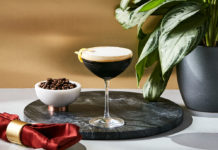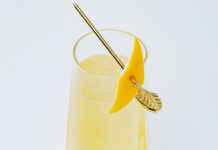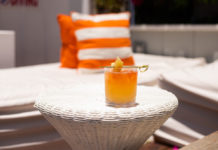By Elyse Glickman
Smoke in cocktails and spirits isn’t new. In fact, the roots can be traced far back to the origin of two key, smoky spirits—peaty Scotch whisky and mezcal from Oaxaca. The distinctive flavors inherent to each are derived from the production process, where raw materials barley and agave, respectively, get the slow roast treatment.
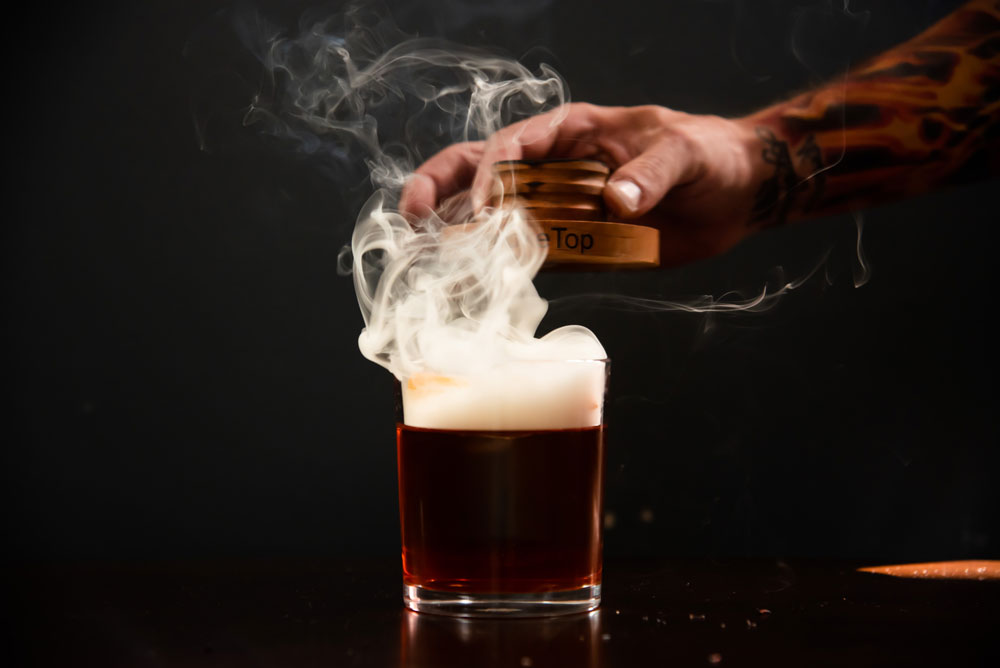
While smoked cocktails may not be new, they are making a comeback in a big way, and your bar will want to get involved.
United States Bartenders’ Guild (USBG) members and other seasoned bartenders offer a few hot tips and tricks to give rise to customer excitement and more sales using smoked cocktails.
Rafe Gabel
Rafe Gabel, co-owner and director of operations at Triangulo Restaurant Group for Duende in Oakland, Calif., says it all comes down to your smoking method, and he offers a few tips:
- Decide on a method: Slow smoking the alcohol like meat, or adding smoke to the glass for the dramatic presentation and smell. Be careful, though, because there is a limit where too much is too much.
- Consider smoking your vermouths or syrups versus the higher-proof base spirit.
- If your restaurant’s kitchen has a smoker, ask the chef if you can smoke a sweet vermouth or make a smokey tincture.
- More experienced bartenders can torch wood chips, then place those with the cocktail under a glass cloche and present them tableside butler style—removing the cloche to allow the smoke to waft out. It is a very visual presentation style that also stimulates the olfactory senses, whetting the appetite, and of course other people see it (or smell it) and want to order it.
Brett Sanders
Brett Sanders, USBG member and mixologist and bar manager at Olive or Twist in Pittsburg, Penn., explains that many different ingredients can impart flavor when smoked:
- One way is to incorporate liquid smoke into syrups. You can combine liquid smoke with a honey syrup to create a smoked flavor. Two teaspoons of liquid smoke in a liter of honey syrup will change its profile dramatically. It’s pretty hard to mess up. If you add too much liquid smoke, just add more of the syrup to dilute.
- Hay, herbs, cinnamon, black peppercorn, clove, etc.—all of these things will impart flavor when burnt and smoked. Take a small pile of your burn material, and using a small torch, light it on fire. After it is clearly burning, douse the flame by covering it with your glass. Let the glass rest over the now smoking and smoldering material while you craft the drink. Make sure to only pull the glass up when you are ready to pour. This way, the smoke has a chance to really coat the glass walls.
Scott Moser
Scott Moser, bartender at Denver’s FIRE Restaurant & Lounge, has some flavor tips and some safety tips for working with smoke:
- Simply torching the end of a rosemary or thyme sprig is a great way to incorporate smoke and pair cocktails with food.
- It’s important to let the cocktail rest momentarily after it has been smoked. Not resting the cocktail before consumption can lead to smoke inhalation, ultimately creating a bitter beverage, and most dangerous, a sickened guest.
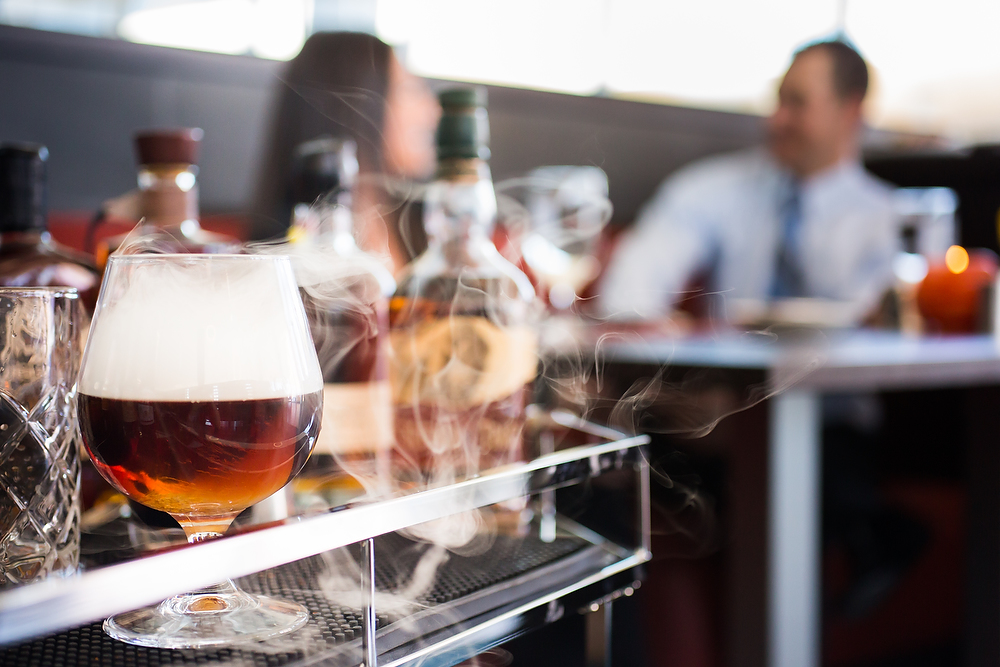
Photo: Scott Moser, FIRE Restaurant & Lounge
Kristan Arnold
Kristan Arnold of Elgin Public House in Burlington, Ill. , advises bartenders and bar operators to leave time for making smoked cocktails, which can take longer:
- You can pre-smoke fruit intended to be muddled or used as garnishes. This can be done as prep and won’t be rushed while you are busy. Start with your smoked cocktails first during service to ensure that they get the time needed to infuse that smoky flavor, with whichever method you choose to smoke.
- Try dehydrated smoked fruits and herbs along with different smokers and wood chips. Remember, we never get any better if we don’t push ourselves and keep learning.


